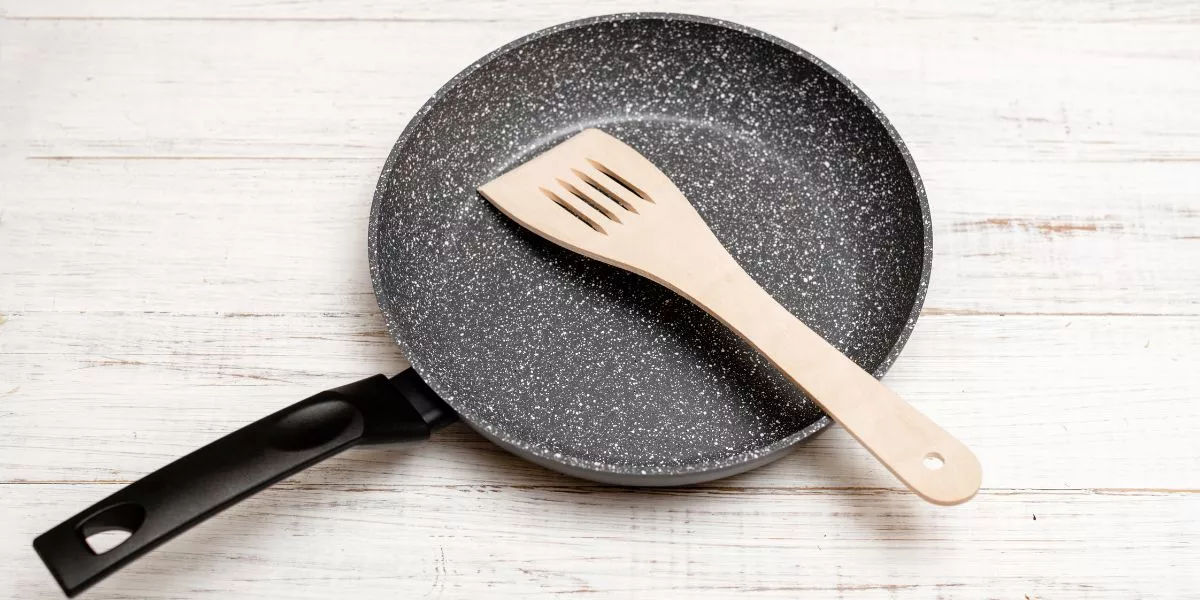
When it comes to selecting the best non-stick cookware for your kitchen, the choices can be overwhelming. From material composition to heat compatibility, each aspect plays a crucial role in determining the right fit for your cooking needs. Understanding the various factors involved in choosing quality non-stick cookware is essential for achieving culinary success. So, how do you ensure that you make the best choice for your kitchen? Let's explore the key considerations that will guide you towards selecting the perfect non-stick cookware set.
Material Composition
When selecting non-stick cookware, consider the material composition to ensure durability and safety.
The most common materials used in non-stick cookware are aluminum, stainless steel, and ceramic. Aluminum is known for its excellent heat conduction, making it a popular choice for cookware. However, pure aluminum can react with acidic foods, so it's often coated with a non-stick material to prevent this.
Stainless steel is durable and resists rust and corrosion, but it isn't the best conductor of heat. To compensate for this, stainless steel cookware often has an aluminum or copper core to improve heat conduction.
Ceramic cookware is non-reactive and free of harmful chemicals like PTFE and PFOA found in some non-stick coatings. It's also scratch-resistant and environmentally friendly.
When choosing non-stick cookware based on material composition, consider your cooking needs and preferences to find the best option for your kitchen.
Non-Stick Coating Type
Considering the material composition of your non-stick cookware, the next aspect to explore is the type of non-stick coating used. Non-stick coatings are essential as they prevent food from sticking to the cookware surface, making cooking and cleaning easier. The most common types of non-stick coatings are PTFE (polytetrafluoroethylene) and ceramic.
PTFE coatings, often known by the brand name Teflon, are durable and provide excellent non-stick properties. They're resistant to scratches and high temperatures, making them suitable for a wide range of cooking methods. However, PTFE coatings can deteriorate over time, especially if exposed to high heat or sharp utensils.
On the other hand, ceramic coatings are considered a more environmentally friendly option. They're free from PTFE and PFOA (perfluorooctanoic acid), making them a healthier choice for cooking. Ceramic coatings are non-reactive and don't release harmful fumes, even at high temperatures. While ceramic coatings can be more fragile and may require more delicate handling, they offer a safer alternative for those concerned about chemicals in their cookware.
When choosing non-stick cookware, consider the type of coating that best suits your cooking needs and preferences.
Heat Compatibility
To ensure the longevity of your non-stick cookware, understanding its heat compatibility is crucial. Different non-stick coatings have varying heat resistance levels. High-heat resistant coatings like ceramic or hard-anodized can withstand temperatures up to 500°F, making them suitable for searing and high-heat cooking methods. On the other hand, traditional non-stick coatings are best used at low to medium heat settings to prevent the breakdown of the coating and release of harmful fumes.
Exceeding the recommended temperature limits can lead to the deterioration of the non-stick coating, reducing its effectiveness and lifespan. It's essential to follow the manufacturer's guidelines on heat settings and avoid exposing the cookware to extreme temperatures to maintain its non-stick properties.
When choosing non-stick cookware based on heat compatibility, consider your cooking habits and the types of dishes you frequently prepare. Opt for cookware that can handle the heat levels you commonly use to ensure your non-stick surfaces remain intact and functional for a longer period.
Maintenance and Durability
Ensuring proper care and handling of your non-stick cookware is essential to maintaining its longevity and durability. To prolong the life of your non-stick pans, always use utensils that are safe for non-stick surfaces, such as silicone, wood, or plastic. Avoid using metal utensils that can scratch and damage the non-stick coating. When cleaning your cookware, opt for gentle washing with warm, soapy water and avoid abrasive scrubbers that can wear down the non-stick coating.
Proper storage is also crucial in maintaining the non-stick properties of your cookware. To prevent scratching, stack your pans with a protective layer in between or hang them up if possible. Additionally, avoid exposing your non-stick cookware to high heat for extended periods as this can deteriorate the non-stick coating. Overheating your pans can also release harmful fumes into the air.




